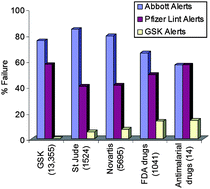Scientists in the UK have developed a compound to combat the hepatitis C virus that could be taken as a pill.
David Pryde and his team from Pfizer Global Research and Development, Sandwich, have made new compounds to activate a protein in the immune system called TLR7 – toll-like receptor 7 – which fights the infection. Toll-like receptors identify foreign DNA, such as a virus, and produce proteins that inhibit the virus’ replication.
300 million people suffer from hepatitis C worldwide. The virus that causes the disease resides in the liver and can lead to cirrhosis, with some sufferers requiring liver transplants. Current treatments only cure half of patients and are administered intravenously. Recent research has focused on increasing the effectiveness of the drugs and on developing oral treatments.
Pryde’s team made heterocyclic analogues based on the structure of purines, known activators of TLR7 and the basis of current oral drugs. ‘The most potent TLR7 agonists are purine-based,’ explains Pryde. ‘But we wanted to design potent non-purine based agonists to maximise the chances of avoiding any unwanted off-target pharmacology.’

The compounds activate a protein in the immune system, which fights hepatitis
Read the full story in Chemistry World
The discovery of a novel prototype small molecule TLR7 agonist for the treatment of hepatitis C virus infection
David C. Pryde, Thien-Duc Tran, Peter Jones, Gemma C. Parsons, Gerwyn Bish, Fiona M. Adam, Mya C. Smith, Donald S. Middleton, Nick N. Smith, Frederick Calo, Duncan Hay, Michael Paradowski, Katie J. W. Proctor, Tanya Parkinson, Carl Laxton, David N. A. Fox, Nigel J. Horscroft, Giuseppe Ciaramella, Hannah M. Jones, Jonathan Duckworth, Neil Benson, Anthony Harrison and Rob Webster.
Med. Chem. Commun., 2011, DOI: 10.1039/c0md00197j
Link to journal article











 This new and exciting issue comes with two reviews.
This new and exciting issue comes with two reviews.
 Welcome to
Welcome to 
